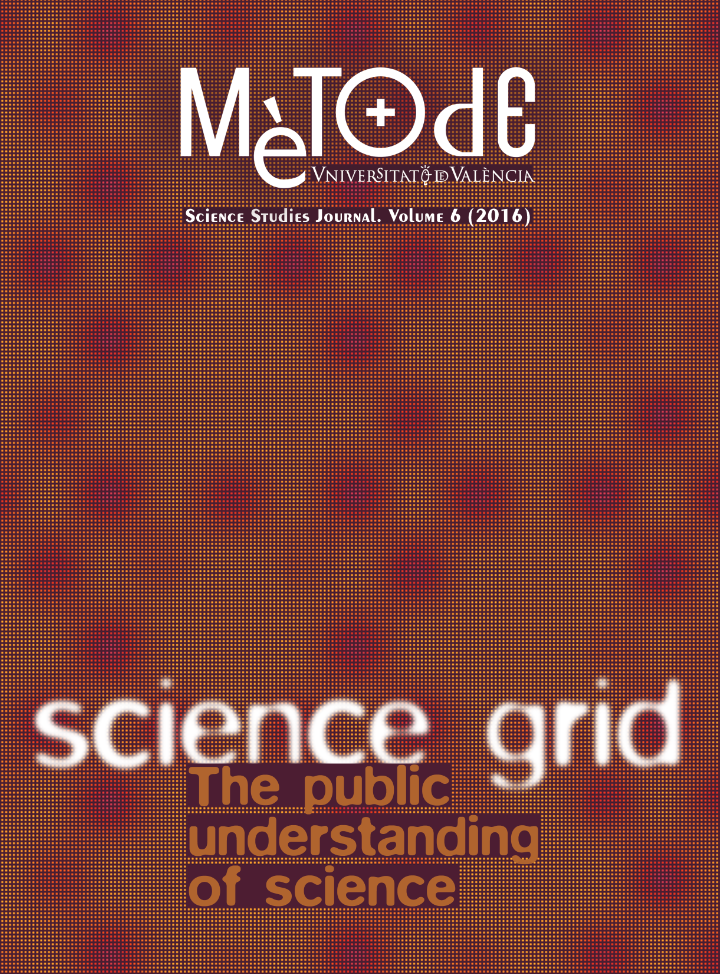How do organisms adapt to climate change? Chromosomal inversions in 'Drosophila subobscura': The case of Serbian populations
DOI:
https://doi.org/10.7203/metode.6.4042Keywords:
Drosophila subobscura, chromosome inversion, adaptation, natural selection, climate change Abstract
Abstract
It is well known that chromosomal inversions in natural populations of the species Drosophila subobscura are adaptations to changes in the environment. It has been observed that inversions change in frequency over time and that they are so far following the pattern expected given the global warming of our planet. These results have been brought to light by our research on Serbian populations of D. subobscura. We found that inversion-related changes in chromosomal polymorphisms depended on the season of the year and in the long term (10-15 year periods) they followed what we would expect given global warming. Therefore, chromosomal inversions in this species are good indicators of climate change and can help us to study how organisms adapt to it.
 Downloads
Downloads
 References
References
Balanyà, J., Huey, R. B., Gilchrist, G. W., & Serra, L. (2009). The chromosomal polymorphism of Drosophila subobscura: A microevolutionary weapon to monitor global change. Heredity, 103, 364–367. doi: 10.1038/hdy.2009.86
De Frutos, R., & Prevosti, A. (1984). Temporal changes of chromosomal polymorphism in natural populations of Drosophila subobscura. Genetica, 63, 181–187. doi: 10.1007/BF00128411
Hansen, J., Sato, M., Ruedy, R., Lo, K., Lea, D. W., & Medina-Elizade, M. (2006). Global temperature change. Proceedings National Academy of Sciences, 103, 14288–14293. doi: 10.1073/pnas.0606291103
Krimbas, C. B. (1993). Drosophila subobscura: Biology, genetics and inversion polymorphism. Hamburg: Verlag Dr Kovac.
Krimbas, C. B., & Loukas, M. (1980). The inversion polymorphism of Drosophila subobscura. Evolutionary Biology, 12, 163–234.
Mestres, F., Balanyà, J., Prevosti, A., & Serra, L. (1993). Genética evolutiva de la especie colonizadora Drosophila subobscura. Mundo Científico, 13, 408–416.
Orengo, D. J., & Prevosti, A. (1996). Temporal changes in chromosomal polymorphism of Drosophila subobscura related to climatic changes. Evolution, 50, 1346–1350. doi: 10.2307/2410676
Prevosti, A., Ribo, G., Serra, L., Aguade, M., Balaña, J., Monlcus, M., & Mestres, F. (1988). Colonization of America by Drosophila subobscura: Experiment in natural populations that supports the adaptive role of chromosomal-inversion polymorphism. Proceedings National Academy of Sciences, 85, 5597–5600. doi: 10.1073/pnas.85.15.5597
Wymore, A. S., Bothwell, H. M., Compson, Z. G., Lamit, L. J., Walker, F. M., Woolbright S. A., & Witham T. G. (2014). Community genetics applications for forest biodiversity and policy: Planning for the future. In T. Fenning (Ed.), Challenges and opportunities for the world’s forest in the 21st century (pp. 707–726). London: Springer.
Zivanovic, G., Andjelkovic, M., & Marinkovic, D. (2002). Chromosomal inversion polymorphism of Drosophila subobscura from south-eastern part of Europe. Journal of Zoological Systematics and Evolutionary Research, 40(4), 201–204. doi: 10.1046/j.1439-0469.2002.00189.x
Zivanovic, G., & Mestres, F. (2010a). Viabilities of Drosophila subobscura homo- and heterokaryotypes at optimal and stress temperatures. I. Analysis over several years. Hereditas, 147, 70–81. doi: 10.1111/j.1601-5223.2009.02163.x
Zivanovic, G. & Mestres, F. (2010b). Viabilities of Drosophila subobscura homo- and heterokaryotypes at optimal and stress temperatures. II. Seasonal component analysis. Hereditas, 147, 82–89. doi: 10.1111/j.1601-5223.2010.02164.x
Zivanovic, G., & Mestres, F. (2011). Changes in chromosomal polymorphism and global warming: The case of Drosophila subobscura from Apatin (Serbia). Genetics and Molecular Biology, 34, 489–495. doi: 10.1590/S1415-47572011000300020
Zivanovic, G., Arenas, C., & Mestres, F. (2012). Short- and long-term changes in chromosomal inversion polymorphism and global warming: Drosophila subobscura from the Balkans. Israel Journal of Ecology and Evolution, 58, 289–311. doi: 10.1560/IJEE.58.4.289
Zivanovic, G., Arenas, C., & Mestres, F. (2014). Inversion polymorphism in two Serbian natural populations of Drosophila subobscura: Analysis of long-term changes. Russian Journal of Genetics, 50, 638–644. doi: 10.7868/S0016675814060150
Downloads
Published
How to Cite
-
Abstract1478
-
PDF393
Issue
Section
License
![]()
All the documents in the OJS platform are open access and property of their respective authors.
Authors publishing in the journal agree to the following terms:
- Authors keep the rights and guarantee Metode Science Studies Journal the right to be the first publication of the document, licensed under a Creative Commons Attribution-NonCommercial-NoDerivatives 4.0 International License that allows others to share the work with an acknowledgement of authorship and publication in the journal.
- Authors are allowed and encouraged to spread their work through electronic means using personal or institutional websites (institutional open archives, personal websites or professional and academic networks profiles) once the text has been published.





